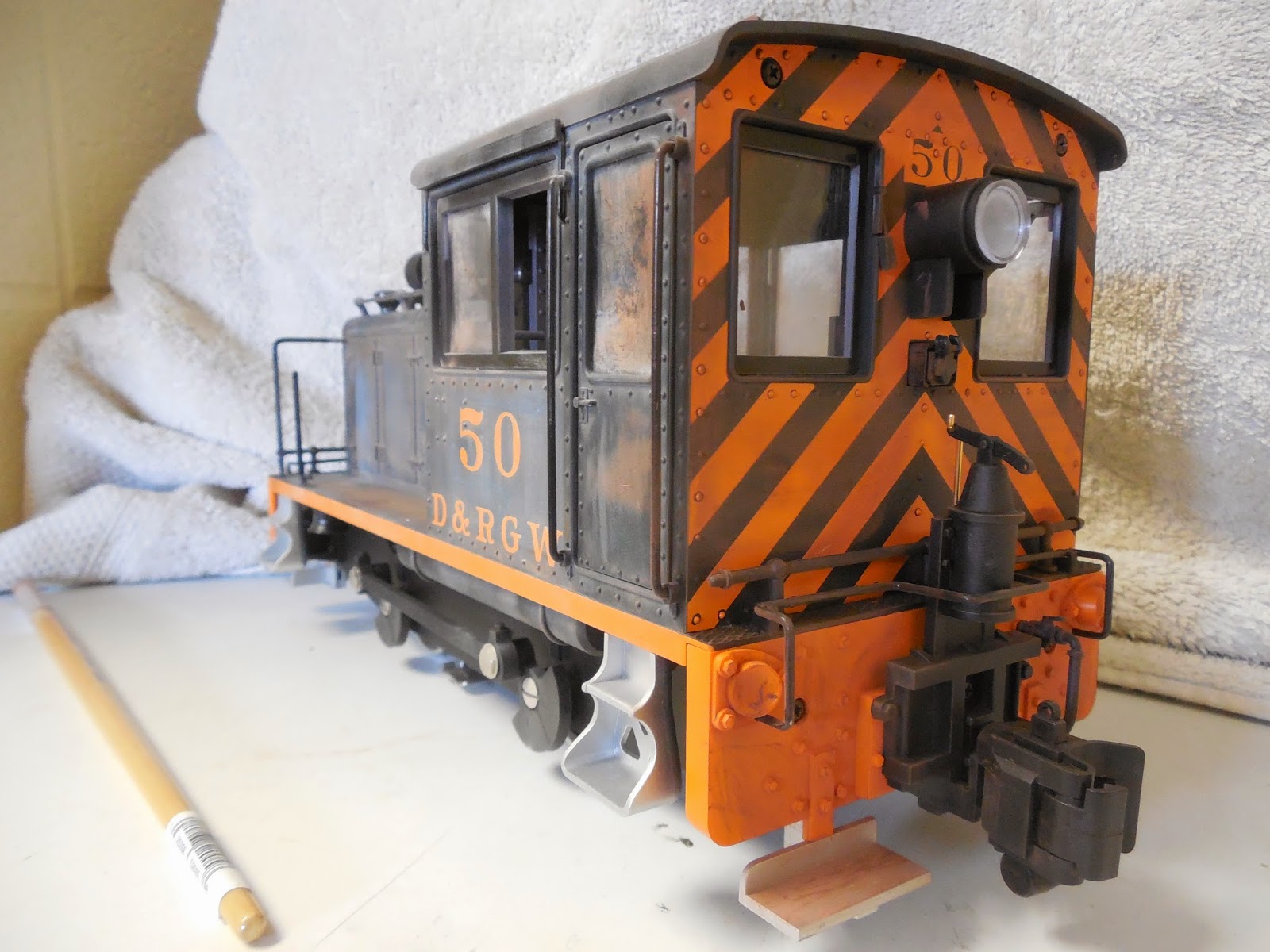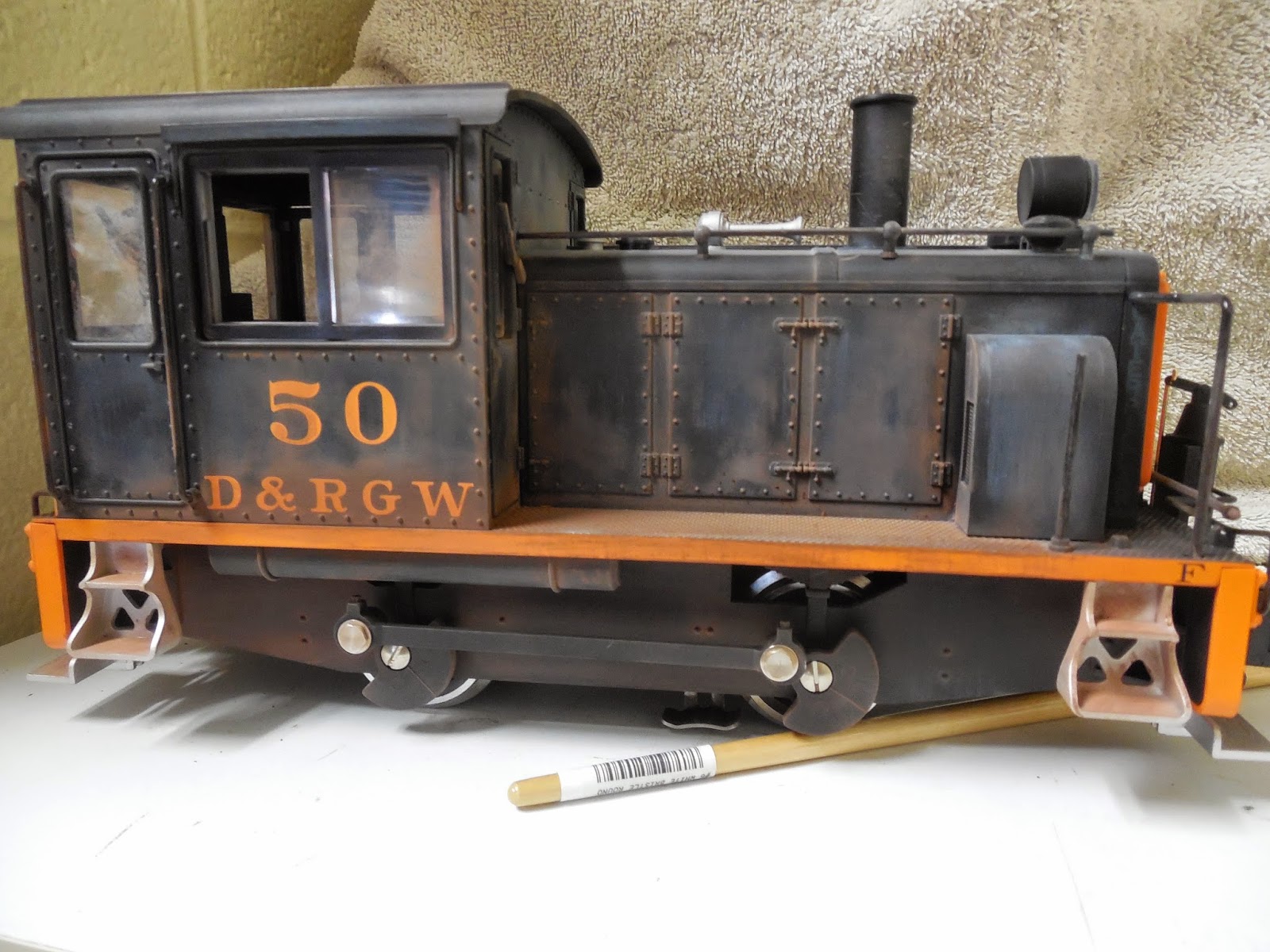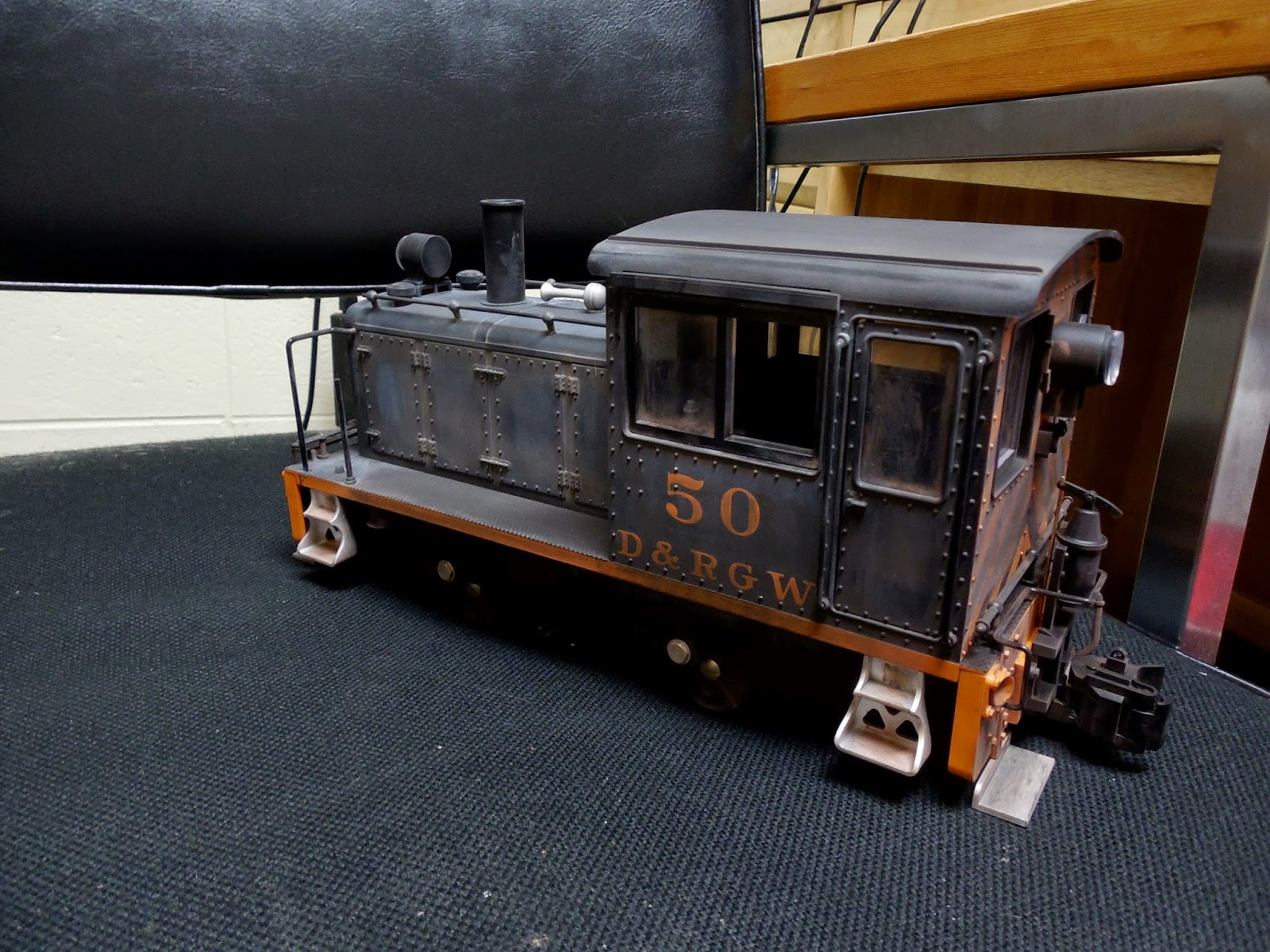Pastels, as I found out yesterday, is going to e my go-to choice for weathering. Yesterday I had nothing better to do, so I decided to weather my LGB G scale model of the small DRGW #50 diesel. Most Colorado narrow gauge fans know this locomotive well. Unfortunately, as with the case of most small diesels, when it was in service on the DRGW, few people thought to take a picture. There are plenty tht exist from recent years when it has been running at the Colorado Railroad Museum, but I've only been able to find a few photos.
Therefore, my weathering on the model isn't quite the same as on the prototype, oh well. I think the results are satisfactory, and I'll be using pastels from now on. One thing I haven't figured out yet is how I'm going to seal the pastels to the model so they don't rub off. But anyways, below is my instructional slide show:
Here are the before photos: showing several angles of the locomotive:
And the finished product!
Therefore, my weathering on the model isn't quite the same as on the prototype, oh well. I think the results are satisfactory, and I'll be using pastels from now on. One thing I haven't figured out yet is how I'm going to seal the pastels to the model so they don't rub off. But anyways, below is my instructional slide show:
Here are the before photos: showing several angles of the locomotive:
For the technique, I applied the pastel in strokes, then I brushed it around a bit until the pastel was dull and thin, looking more like dust.
The ifrst color on my list was white, giving the black a faded and sunbathed look to it:
Then came the second color. In pastel terms, it s Sanguine, which looks a lot like Burnt Umber. I applied this to represent rust.
Next came dirt, which was represented with Bistre, more dull, brown color. This was applied pretty much anywhere you'd think to find dirt and grime.
And finally, I added in black to represent soot and to tie the other colors together.
And the finished product!












































No comments:
Post a Comment